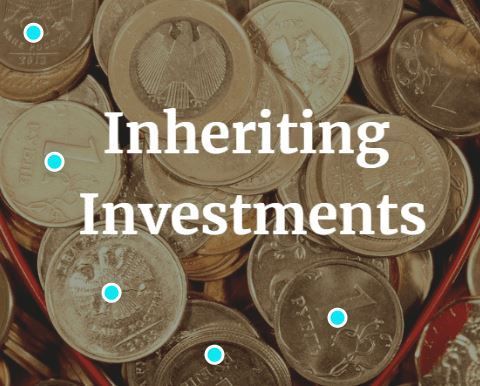By Brad Dickfos
•
June 15, 2025
With the end of the financial year coming up, now’s a great time to get on top of your tax and super. A little planning before 30 June can help you make the most of any opportunities to reduce tax, boost your super, and avoid last-minute surprises. This checklist outlines key things to consider and action before the financial year wraps up. It’s a simple way to stay on track and finish the year with confidence. TAX CHECKLIST Here are some practical things to consider before 30 June to help you tidy up your tax position and potentially reduce your bill. Bad Debts If you're running a business, write off any bad debts that won’t be recovered before 30 June so they can be claimed. Employee Bonuses and Director Fees Planning to pay employee bonuses or director fees? Make sure they're confirmed in writing and communicated to recipients by 30 June, even if payment happens later. Charitable Donations Bring forward any planned donations and have the highest-earning family member make the gift. Remember: Donations must be to registered charities. They can’t create a tax loss. Keep receipts. Prepay Interest on Loans If you have a loan for an income-generating asset (like an investment property), consider prepaying interest before 30 June to bring forward the deduction. Claim Work-Related or Business Costs Bring forward costs such as repairs, stationery, or supplies by 30 June 2025. These small deductions can add up. This applies to all taxpayers, not just businesses. Prepay Expenses You can claim prepaid expenses, such as insurance or subscriptions. Where the expense is: Under $1,000 – all taxpayers can claim the expense Over $1,000 – fully deductible if you're a small business if the expense relates to a period of 12 months or less. Note that this is also available if it's a non-business expense of individuals, such as work related expenses or rental property costs. Write Off Old Stock If you hold stock, write off any damaged, outdated or unsellable items before 30 June 2025. Review Assets & Depreciation Small businesses (turnover under $10m) can immediately deduct assets under $20,000 that were acquired from 1 July 2024 and ready to use by 30 June 2025. Also, remove any old equipment from your depreciation schedule if it’s been sold, thrown out, or is no longer usable. Electric Vehicles If your business provides an electric vehicle to an employee, you may be eligible for depreciation deductions and Fringe Benefits Tax (FBT) concessions. Defer Income If possible, delay receiving income (like issuing invoices) until after 30 June to push tax into next year. Offset Capital Gains Selling an asset this year with a profit? You could crystallise capital losses before 30 June to offset that gain. Watch out: 'Wash sales' (selling and rebuying the same asset just to get a loss) are not allowed. Defer Capital Gains If you're planning to sell an asset for a gain, consider delaying until after 30 June if it makes sense for your broader financial situation. Personal Services Income (PSI) If you’re working in your own name (like a contractor or freelancer), check that your income qualifies as a business under PSI rules. Business Losses If your business runs at a loss, you may not be able to claim that loss if you carry on a “non-commercial business” - unless you pass one of the ATO’s tests (eg, income, asset, or profit test). Company Loans to Shareholders (Division 7A) If you’ve borrowed from your company, the loan needs to be properly documented, put on commercial terms and repaid. If repaying through dividends, make sure the dividends are legally declared and paid prior to 1 July (with appropriate documentation in place). Trust Distributions If you're a trustee, resolutions must be made before 30 June to properly distribute income to beneficiaries. You also need to let your beneficiaries know what they’re entitled to. Beneficiary TFN Reporting If new beneficiaries gave you their TFN between April–June, you must lodge a TFN report by 31 July 2025. Motor Vehicle Logbook Planning to claim car expenses using the logbook method? Start now and track 12 weeks of usage (can span over two tax years). Also record your odometer readings. Private Health Insurance Make sure you have the right level of cover to avoid the Medicare Levy Surcharge, especially if your family situation has changed (eg. new baby, separation, adult children moving off your policy). Check Your Insurance Cover Review your personal and business insurance needs. Not only does this provide peace of mind, some policies may also be tax deductible, especially if prepaid. Review Your Business Structure Is your current setup still the right one? Changes in income, family, or risk levels may mean a trust, company, or restructure could be more effective. We can help you weigh up your options. SUPER CHECKLIST Make the most of your super before 30 June 2025 with these smart, simple tips. Check Your Contribution Limits Before adding more to super, log in to myGov > ATO > Super > Information to check how much you’ve already contributed. Tip: If you're in an SMSF, your info may not be up to date in myGov, but we can help you work this out. Add to Super and Claim a Tax Deduction You may be able to make a personal deductible contribution and claim it at tax time. To be eligible: You must be over 18 If you're 67–74, you must meet the work test or qualify for a work test exemption If you’re over 75, you must contribute within 28 days of your birthday month Don’t forget: To claim a tax deduction, submit a Notice of Intent to Claim a Deduction to your super fund and get their confirmation before lodging your tax return or making withdrawals, rollovers, or starting a pension. Use Up Unused Contribution Limits Haven’t used your full concessional contribution cap in recent years? You may be able to catch up using the carry-forward rule if your total super balance is under $500,000 on 30 June 2024. Tip – Unused limits from 2019–20 expire after 30 June 2025 so don’t miss out. Split Contributions with Your Spouse You can split up to 85% of your 2023–24 concessional (pre-tax) contributions with your spouse before 1 July 2025. This is a great way to even out your balances and plan ahead for retirement. Note – To use this strategy, your spouse must be under their preservation age or aged 64 or younger and not retired when you make the request to your fund. Get a Tax Offset for Spouse Contributions If your spouse earns less than $40,000, consider making an after-tax contribution to their super. By doing so, you could get up to a $540 tax offset while boosting their retirement savings. Grab a Government Co-Contribution If you earn less than $60,400 and at least 10% comes from work or running a business, you could be eligible for a government co-contribution. All you need to do is add up to $1,000 to your super and the government may add up to $500 extra. Avoid the Division 293 Tax Trap If your income (plus employer contributions) is over $250,000, you may pay an extra 15% tax on some of your super contributions. Strategies like bringing forward expenses or deferring income may help keep you below the threshold. Maximise Non-Concessional (After-Tax) Contributions If you're under 75, you may be able to contribute up to $360,000 in one year using the bring-forward rule. New rules from 1 July 2025 may allow you to contribute even more – speak with us about getting the timing right. Take Your Minimum Pension Payment If you're drawing a pension from your super, make sure you take the minimum amount by 30 June. Missing the minimum may affect your fund’s tax benefits for the whole year. Age: Under 65 Minimum Pension: 4% Age: 65-74 Minimum Pension: 5% Age: 75-79 Minimum Pension: 6% Age: 80-84 Minimum Pension: 7% Age: 85-89 Minimum Pension: 9% Age: 90-94 Minimum Pension: 11% Age: 95 or more Minimum Pension: 14% Need Help? We’re here to help you make the most of EOFY tax and super opportunities. Contact us to discuss what options might work best for your situation.















